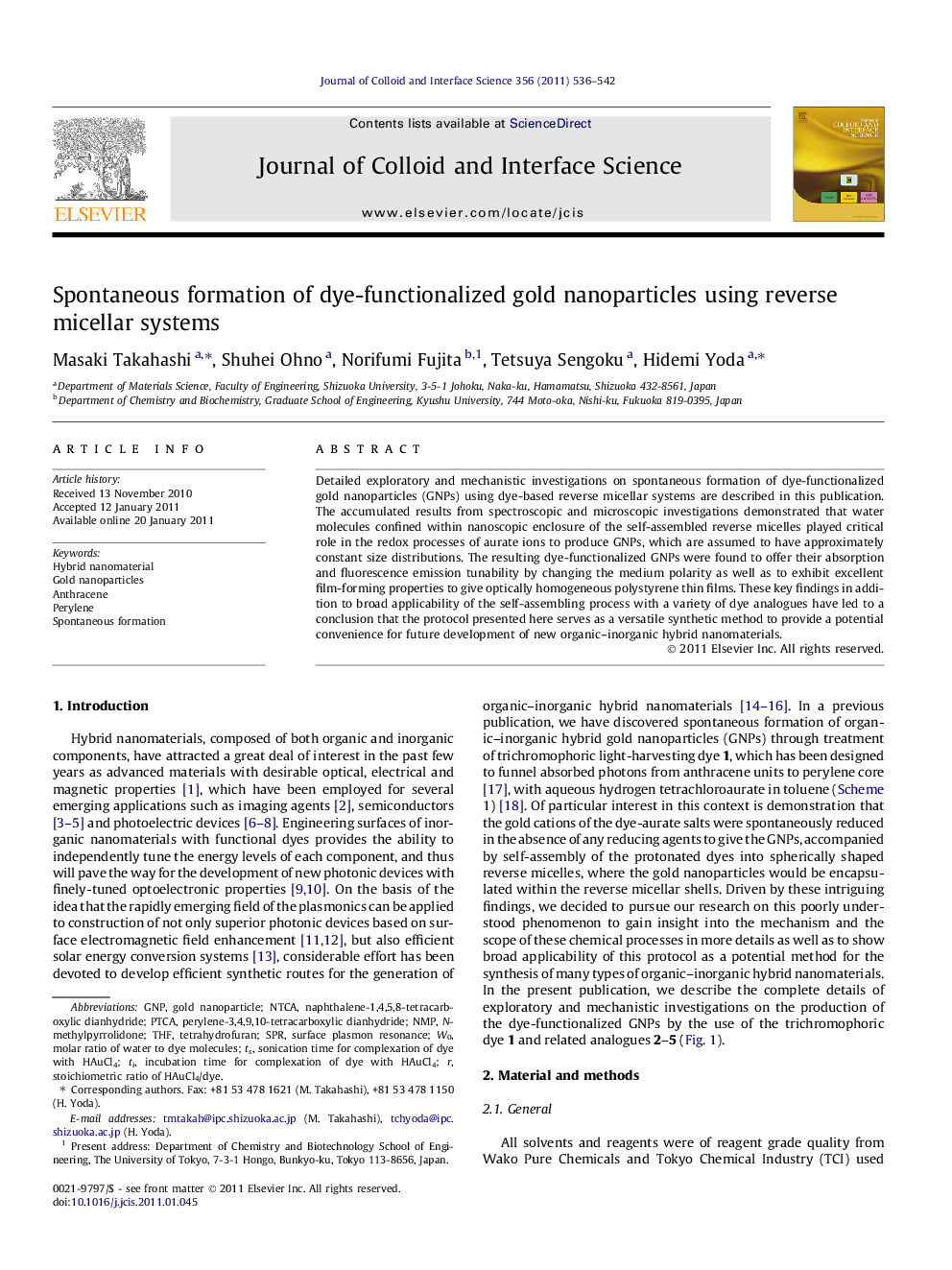| کد مقاله | کد نشریه | سال انتشار | مقاله انگلیسی | نسخه تمام متن |
|---|---|---|---|---|
| 608804 | 880609 | 2011 | 7 صفحه PDF | دانلود رایگان |

Detailed exploratory and mechanistic investigations on spontaneous formation of dye-functionalized gold nanoparticles (GNPs) using dye-based reverse micellar systems are described in this publication. The accumulated results from spectroscopic and microscopic investigations demonstrated that water molecules confined within nanoscopic enclosure of the self-assembled reverse micelles played critical role in the redox processes of aurate ions to produce GNPs, which are assumed to have approximately constant size distributions. The resulting dye-functionalized GNPs were found to offer their absorption and fluorescence emission tunability by changing the medium polarity as well as to exhibit excellent film-forming properties to give optically homogeneous polystyrene thin films. These key findings in addition to broad applicability of the self-assembling process with a variety of dye analogues have led to a conclusion that the protocol presented here serves as a versatile synthetic method to provide a potential convenience for future development of new organic–inorganic hybrid nanomaterials.
Detailed exploratory and mechanistic investigations on spontaneous formation of dye-functionalized gold nanoparticles using dye-based reverse micellar systems are described in this publication.Figure optionsDownload high-quality image (96 K)Download as PowerPoint slideResearch highlights
► Water molecules play a significant role for GNP formations.
► GNPs are assumed to have approximately constant size distributions.
► Photophysical property can be tuned by changing medium polarity.
► Dye-functionalized GNPs exhibit excellent film-forming properties.
► Synthetic protocol has broad applications for dye analogues.
Journal: Journal of Colloid and Interface Science - Volume 356, Issue 2, 15 April 2011, Pages 536–542